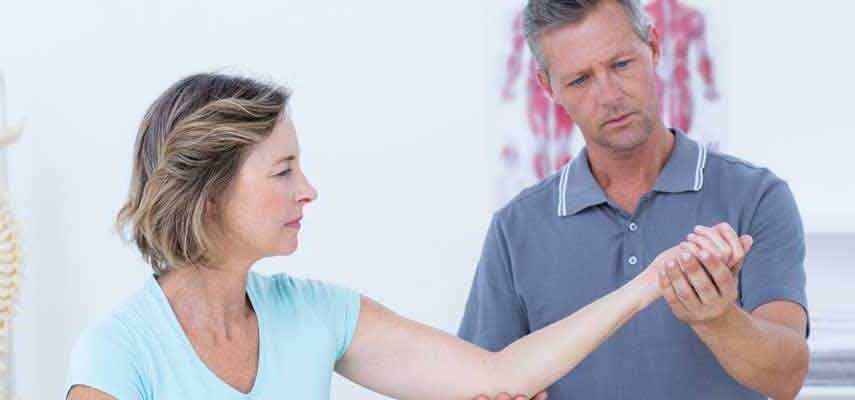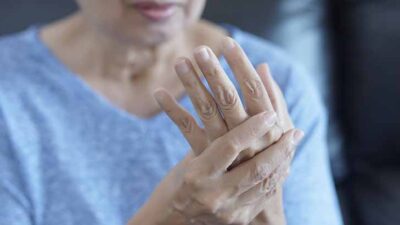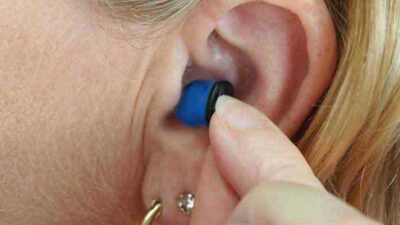Millions of people have joint pain that usually affects one’s knees and prevent them from running errands during the day or other physical activities. Joint pain is usually associated with arthritis, and there are more than 100 forms and types of arthritis and related diseases. Pseudogout is one of the most misunderstood and overlooked types of arthritis. In order to find out what it is and whether you might have this disease or not, keep reading this article.
What is Pseudogout?
Pseudogout is defined as a type of inflammation of joints or arthritis that is characterized by sudden and painful swelling in one or more joints. These painful episodes range from just a few days to several weeks and they usually affect your knee joints.
Medical term for this inflammation s Calcium Pyrophosphate Deposition Disease or CPDD but the term pseudogout was coined due to condition’s striking similarity to gout. Crystal deposits inside the joint cause both conditions (pseudogout and gout) however the type of crystal differs. Literal meaning of pseudogout would be false gout.
In some cases, pseudogout may coexist with gout, which means that two different types of crystals are found in patient’s joint.
Causes of Pseudogout
This condition is primarily caused by the precipitation of calcium pyrophosphate dihydrate crystals developing within joint space. Pseudogout is strongly associated with aging and degenerative arthritis. The crystals’ amount gets bigger as people age which is why it usually affects elderly, particularly individuals over 85 years of age. However, most people who have these crystal deposits don’t necessarily develop pseudogout and scientists are still unable to explain why some people develop this condition and some don’t.
Who is at Risk Of Developing Pseudogout?
Although some people have crystal deposits and don’t develop this condition and others do which is still a puzzle to numerous scientists, they still successfully defined some risk factors for developing pseudogout. People who have higher risk of getting this condition include:
- Elderly – The risk of getting pseudogout increases with age.
- People who are diagnosed with hyperparathyroidism, amyloidosis, gout, and degenerative arthritis (osteoarthritis)
- Joint trauma – Caused by serious injury or surgery
- Genetic disorder – Some people have genetic predisposition to develop pseudogout and unlike most people who develop the condition later in life, hereditary pseudogout occurs at younger ages.
- Mineral imbalances – People with excessive amounts of iron and calcium or insufficient amount of magnesium in their blood have higher chances of getting this condition.
- People who suffer from problems associated with thyroid gland e.g. overactive parathyroid gland or underactive thyroid gland.
What are Signs And Symptoms Of Pseudogout?
It usually affects the knee, but it can occur in other joints as well such as shoulders, wrists, ankles, hips etc. However, you should bear in mind that this condition doesn’t affect all joints at the same time. Instead, pseudogout affects only one or a few joints at a time.
Pseudogout signs and symptoms include:
- Acute joint swelling
- Warmth
- Stiffness
- Pain
As it was already mentioned above, duration of these “episodes” can vary from a few days to several months.
Read Also: Parasites and Joint Pain Connection to Gout
How is Pseudogout Diagnosed?
Signs and symptoms of pseudogout are quite similar to those of gout and other types of arthritis which is why your doctor won’t be able to make a diagnosis with physical exam only. In order to make an accurate disorder your doctor will suggest:
- Lab tests – For example, blood tests are used to inspect the problems with thyroid and parathyroid glands and various mineral imbalances that are linked with pseudogout. Furthermore, your doctor may even withdraw a sample of fluid with a needle from the affected joint in order to test for presence of crystals. With the microscope, the calcium pyrophosphate crystals can be easily identified due to their characteristic shape and color.
- Imaging tests – Your doctor will probably suggest X-ray of the affected joint. This process will reveal joint damage and crystal deposits in the joint’s cartilage.
How is Pseudogout Treated?
Unfortunately, there is no cure or therapy that would completely eliminate pseudogout, but, it doesn’t mean you can’t treat it. The pseudogout treatment is directed towards relieving the inflammation of the affected joints and improving their functionality.
Your doctor may suggest these treatments:
- Medications – the very first thing your doctor will recommend is to use over-the-counter medications to relieve the pain. However, if these pain relievers prove to be unsuccessful for the severity of pain you experience, then your health care provider might suggest these prescription medications:
- Non-steroidal anti-inflammatory drugs – however, you should bear in mind that NSAIDs can, in some cases, cause stomach bleeding and decreased kidney function particularly in older adults. Therefore, you should never take these medications if they are prescribed to someone else and only take them if your doctor prescribes them.
- Colchicine – is effective for pseudogout and your doctor might recommend taking colchicine on daily basis as preventative measure if you experience frequent episodes.
- Corticosteroids – if your doctor thinks you can’t use NSAIDs or colchine then he or she will prescribe corticosteroids which reduce the inflammation and end the “episode”.
- Joint drainage – if you experience severe pain that you can’t relieve with medication, your doctor will perform joint drainage to relieve the pain and pressure on the affected joint. In order to do so, doctor inserts and needle and removes the joint fluid which helps remove some crystals from the joint as well. Then, doctor injects numbing medication and corticosteroids to decrease inflammation.
Things you can do at your home to relieve the pain associated with pseudogout include:
- Applying ice packs
- Resting the joint
- Stay hydrated
- Make diet adjustments by eliminating foods that cause inflammations for healthier alternatives. According to Andrew Well, MD, founder, professor and director of the Arizona Center for Integrative Medicine at the University of Arizona, you should include foods rich in Omega-3 fatty acids into your diet and opt for plant-based diet too, for example antioxidants-rich fruits and vegetables.
- Avoiding demanding physical activities that increase the pressure on the affected joint
- Use over-the-counter pain relievers.
Conclusion
Pseudogout is an inflammation of joints, usually knee joint, which is characterized by swelling and pain that is sometimes severe. Although there is no exact cure for this condition, you can relive the pain with pain relievers and make sure you avoid demanding physical activities.







 This article changed my life!
This article changed my life! This article was informative.
This article was informative. I have a medical question.
I have a medical question.
 This article contains incorrect information.
This article contains incorrect information. This article doesn’t have the information I’m looking for.
This article doesn’t have the information I’m looking for.